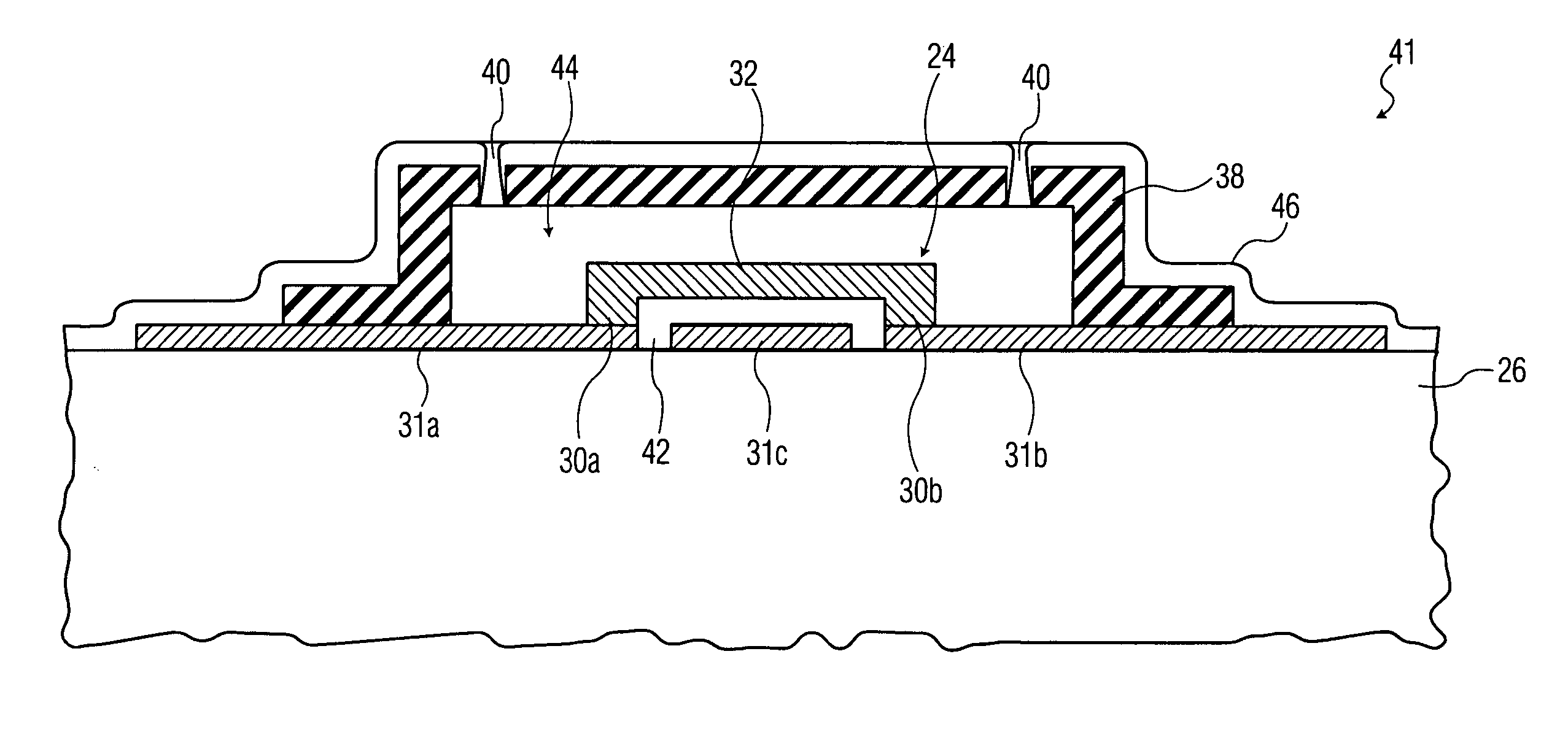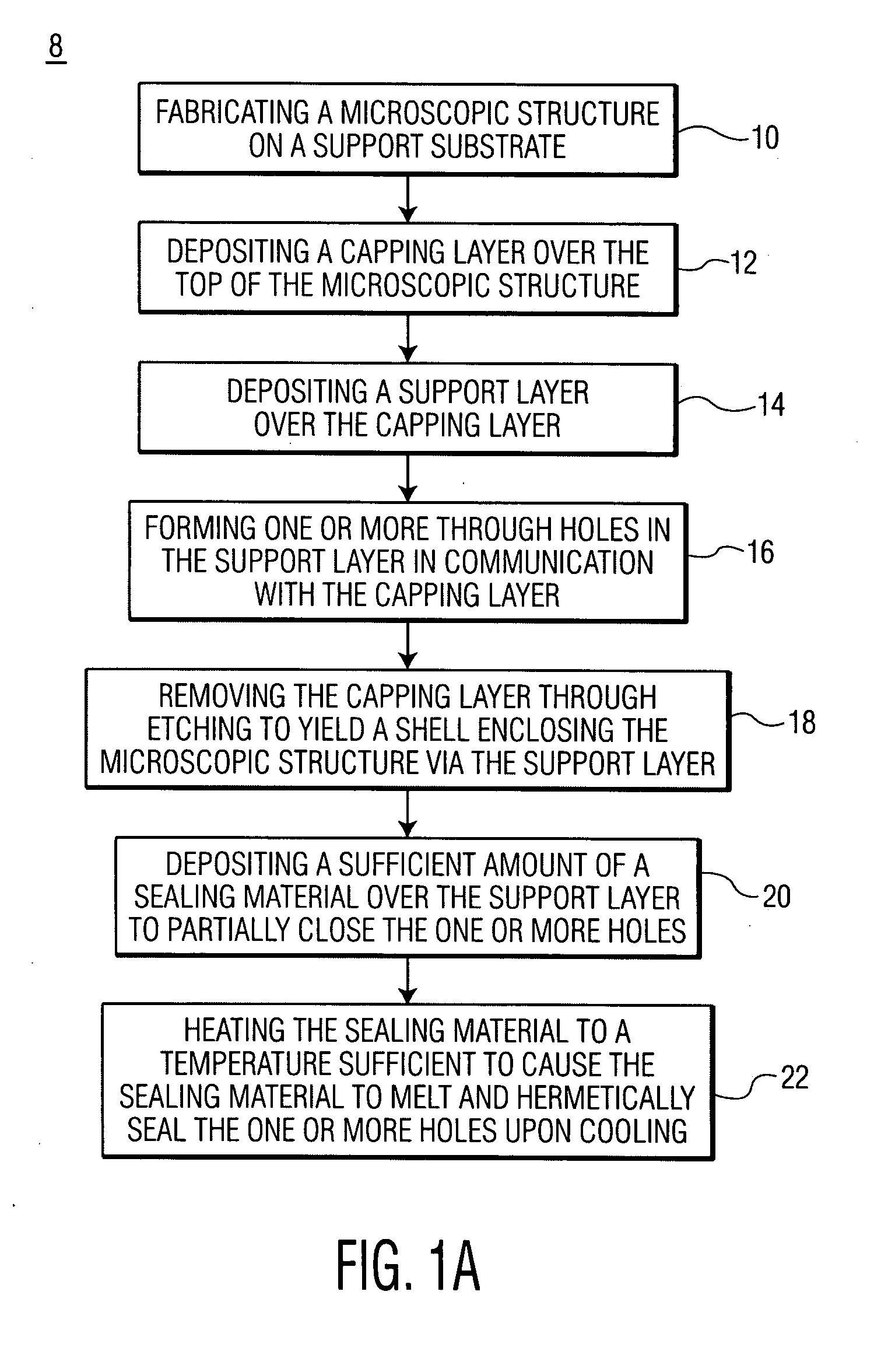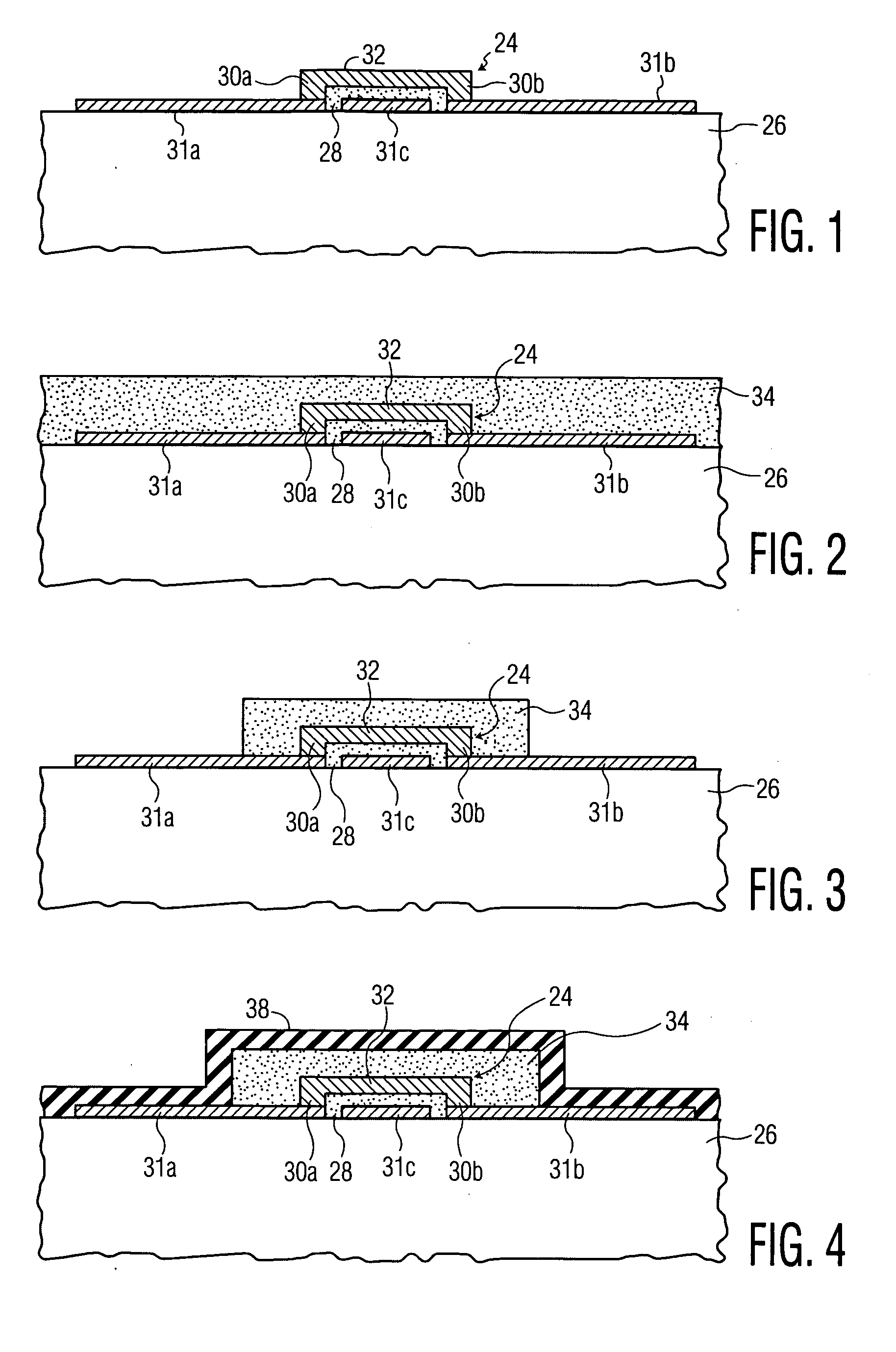Processes for hermetically packaging wafer level microscopic structures
- Summary
- Abstract
- Description
- Claims
- Application Information
AI Technical Summary
Benefits of technology
Problems solved by technology
Method used
Image
Examples
example
Reflow Sealing of Vias Formed in a Silicon Nitride Support Layer
[0078] A thick support layer (1 micron thick) composed of silicon nitride is prepared though sputtering over a microscopic structure. Multiple vias each having a diameter of about 1 micron are etched into the support layer. A copper layer (1 micron thick) is deposited onto the surface of the thick support layer using sputter deposition. An Excimer laser having a wavelength of about 308 nm and a per pulse energy of about 500 mJ focused on a 5 mm by 5 mm spot size is used. The laser is passed through a homogenizer. The laser scans over the copper layer at a rate of about one laser pulse per spot.
[0079] Although various embodiments of the present invention have been shown and described, they are not meant to be limiting. Those of skill in the art may recognize certain modifications to those embodiments, which modifications are meant to be covered by the spirit and scope of the appended claims. For example, in another emb...
PUM
 Login to View More
Login to View More Abstract
Description
Claims
Application Information
 Login to View More
Login to View More - R&D
- Intellectual Property
- Life Sciences
- Materials
- Tech Scout
- Unparalleled Data Quality
- Higher Quality Content
- 60% Fewer Hallucinations
Browse by: Latest US Patents, China's latest patents, Technical Efficacy Thesaurus, Application Domain, Technology Topic, Popular Technical Reports.
© 2025 PatSnap. All rights reserved.Legal|Privacy policy|Modern Slavery Act Transparency Statement|Sitemap|About US| Contact US: help@patsnap.com



